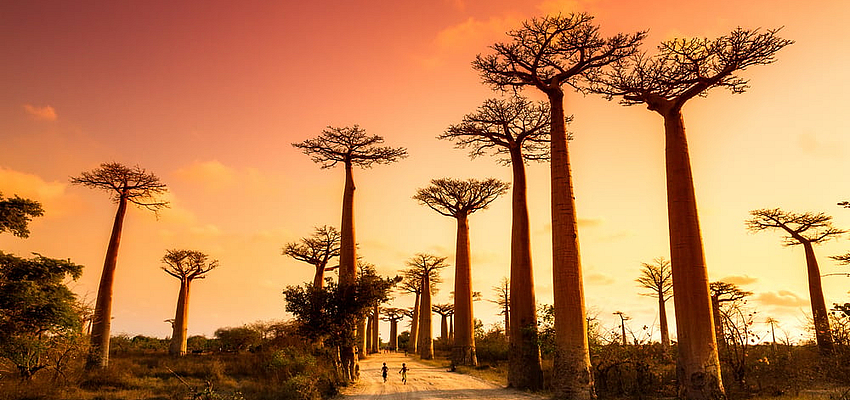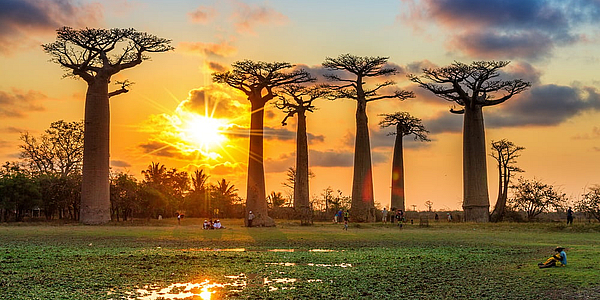


During our tours in Madagascar for our research, my friend Emilson and I contacted an association called Reniala, which is particularly involved in the protection of the forests and animal species of the south of the island. This association manages a reserve of 60 hectares in the village of Mangily. This is how we left for the forest of 1200 baobabs.
We hopped into a bush taxi in Tuléar and headed north along the coast. The track was chaotic and it took about 2 hours to reach the village of Mangily-Ifaty. Once there, we quickly found the entrance to the forest where one of the guides of the association was waiting for us.
As soon as we had set down our bags, we were off for a guided tour of the forest. The guide was passionate about the hidden wealth of his region and shared his enthusiasm during a two-hour walk through the typical vegetation of the south of the island.
On a small trail winding through the trees, we encountered pachypodiums, delonix, givotia and of course a countless number of baobabs of all ages and a variety of strange shapes: in the form of a teapot or rhinoceros, as well as an enormous specimen. You soon understand how the forest got its name.
The guide explained the different traditional uses of the plants in the pharmacopoeia and everyday life: one tree is used for the construction of dugout canoes, the roots of another tree are an effective antiseptic, etc...

After the visit, we returned to the premises of the association for the midday meal. In order to accommodate travellers, scientists and volunteers, the Reniala association has created the "Hostel of the 3 Makis", located on the outskirts of the forest. Once we'd finished lunch, we headed for the lemur conservation and protection centre. Set up by the association, this centre provides shelter for lemurs that have been confiscated by the authorities from individuals or animal traffickers, in order to treat them and release them back into their natural habitat.
In the late afternoon we decided to return to the forest to observe the many species of birds that are native to the region. On the trail we came across tortoises, many lizards, some lemurs hidden in the branches of the trees, and of course many birds.
That evening, we slept at the hostel, lulled by the noises of the surrounding forest.
Before continuing our way the next day, we decided to visit the tortoise shelter which is located next to the forest. This also is a programme for the conservation of two of the region's protected species: the radiated tortoise and the spider tortoise. The site is teeming with quietly strolling tortoises of all sizes and ages. The purpose of the association is not only the protection of these species and the development of local public awareness for their protection, but also the scientific study of these animals.